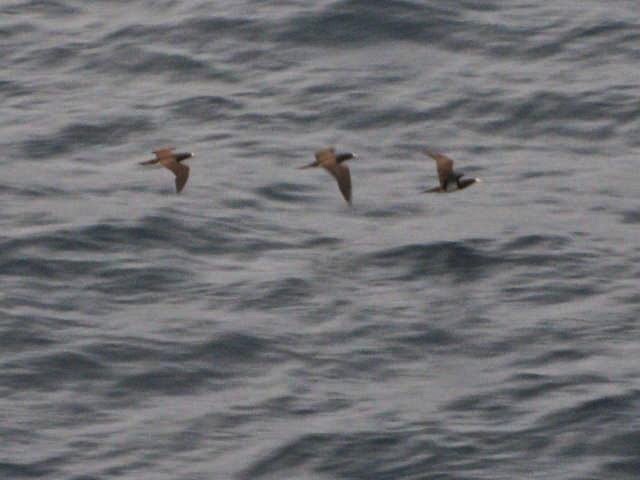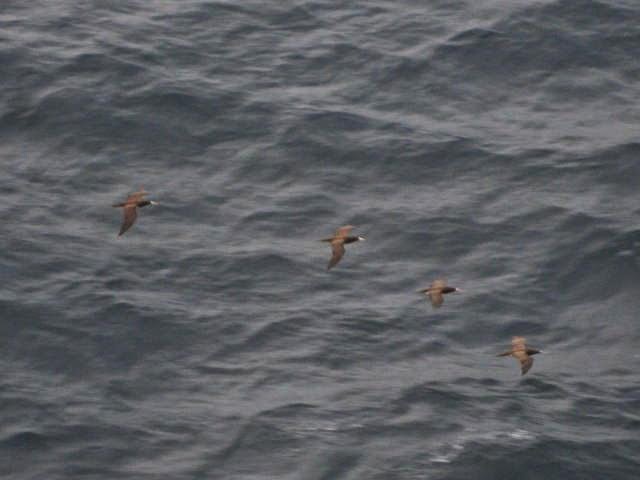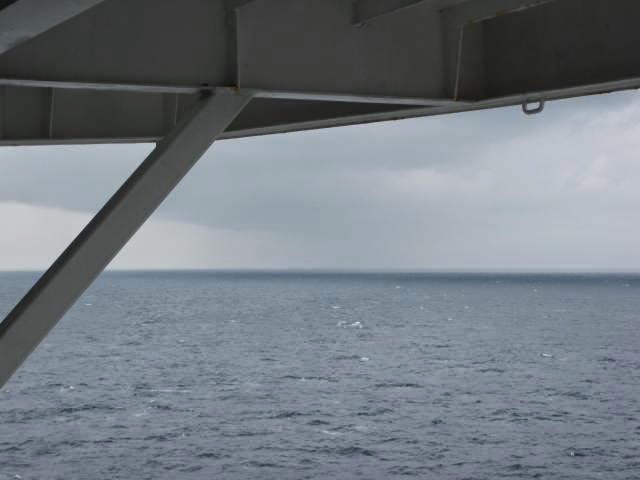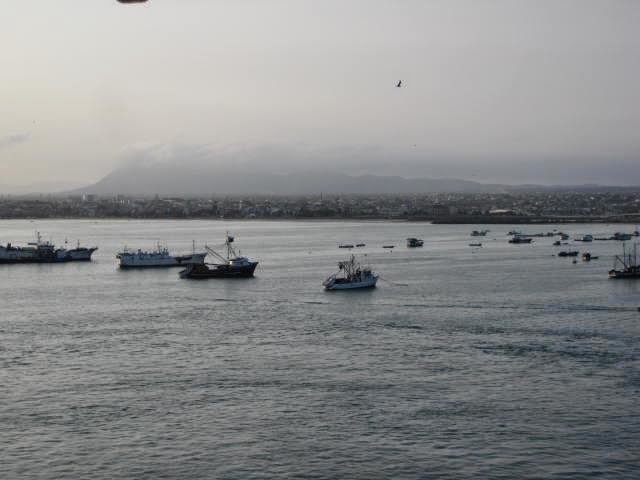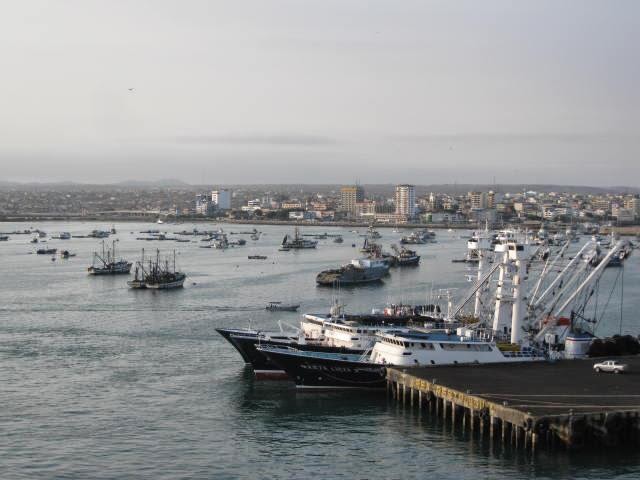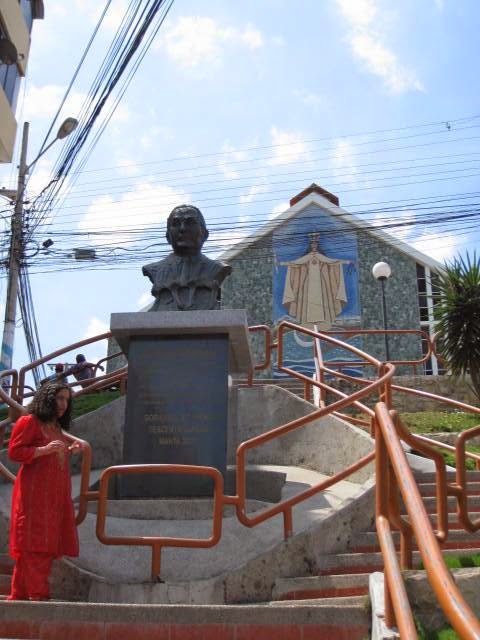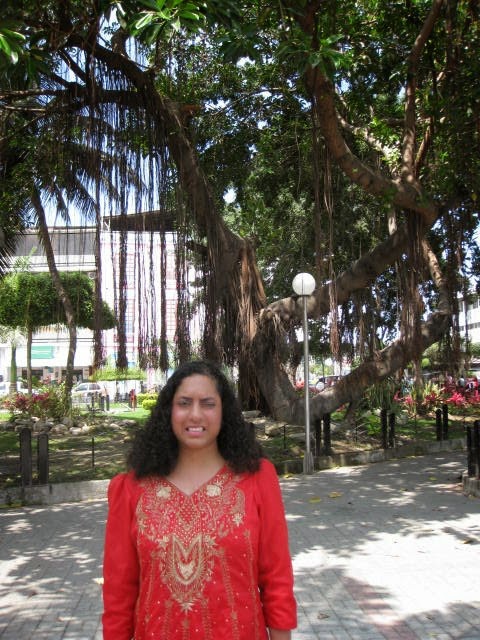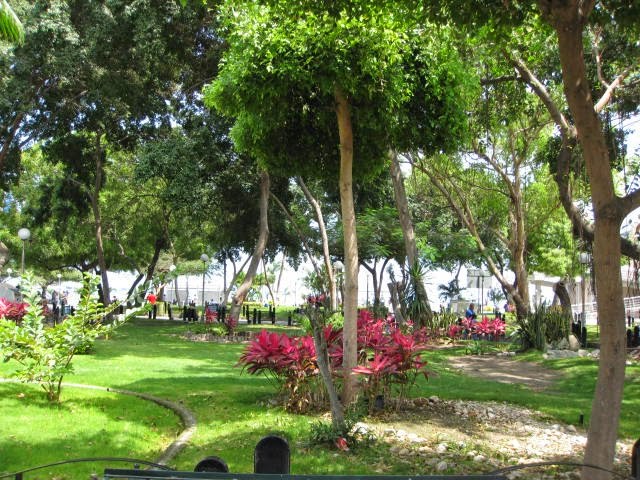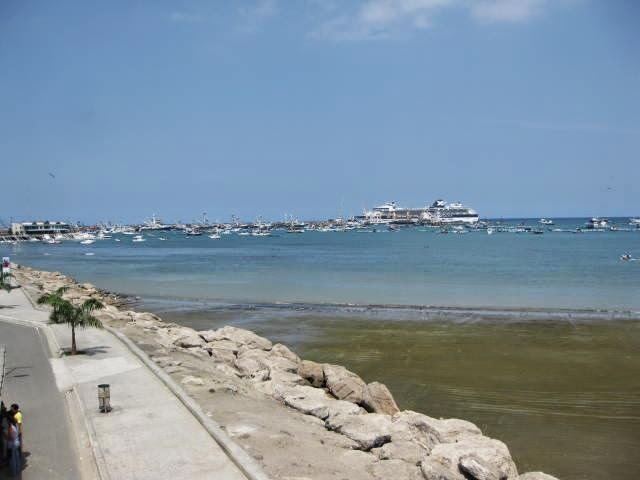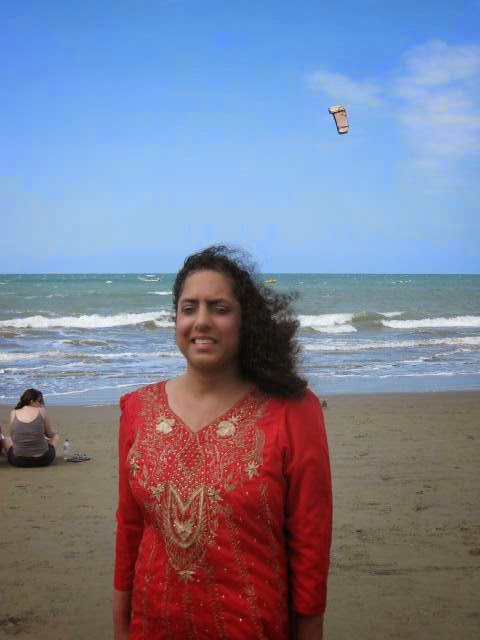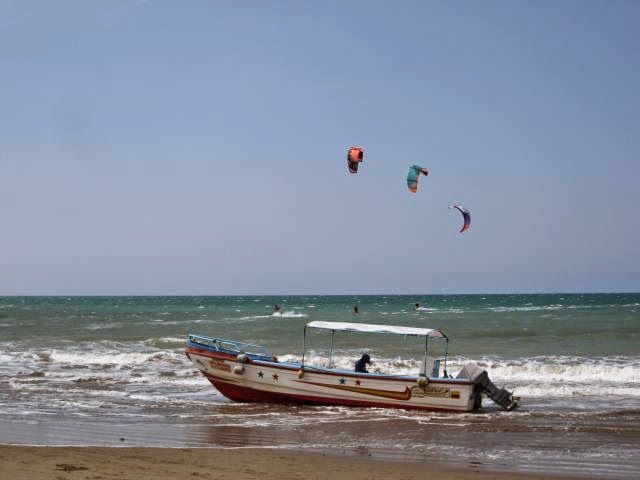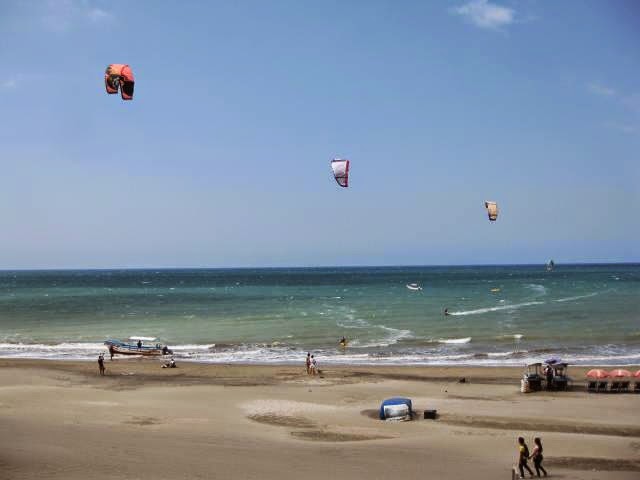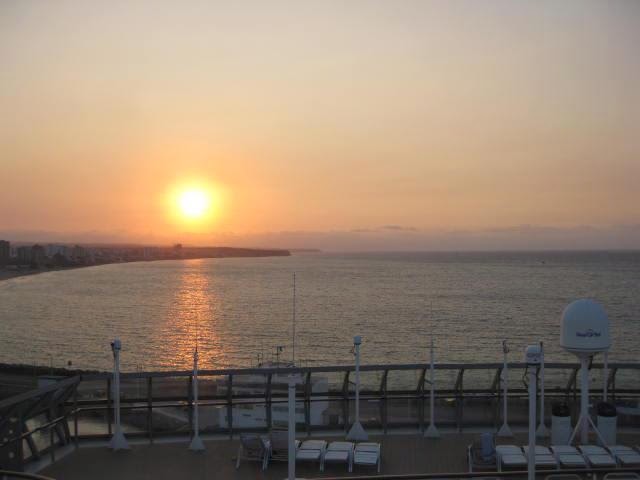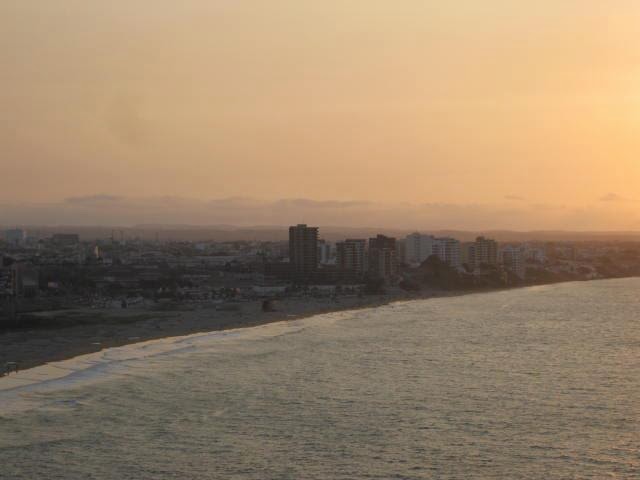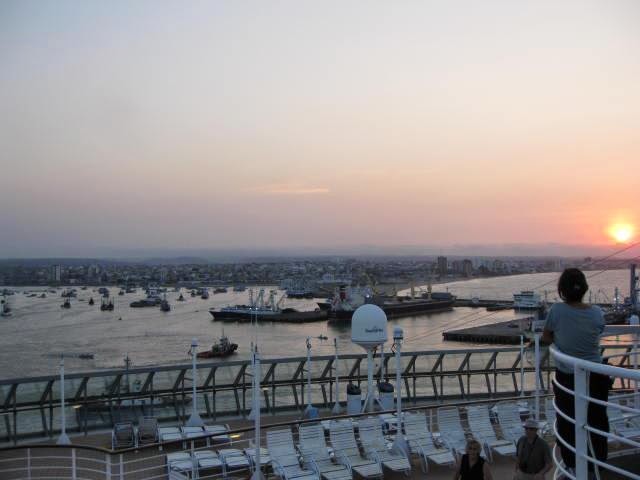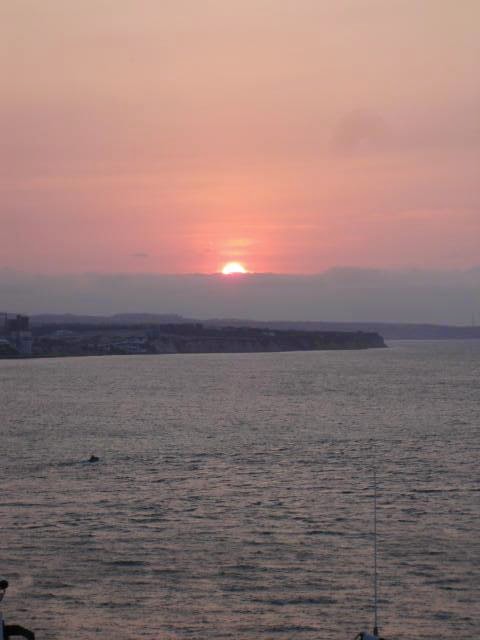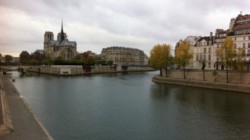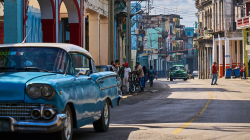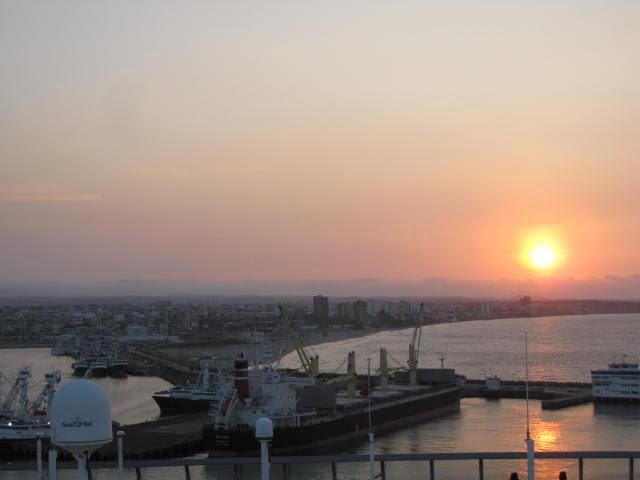
This is part 4 of my series about our cruise to South America in December, 2012. Today’s port-of-call would be Manta, Ecuador, a fairly small city literally straddling the equator, its official latitude being just 0 degrees and 57 minutes south. This would not actually be my first visit to South America — that milestone was completed when we stepped off the ship in Cartagena, Colombia a few days earlier — but this was my first visit to the Pacific side of South America south of the equator. One of these days, I’ll get around to writing about my actual first visit to the southern hemisphere, a trip to South Africa in April, 2008.
For a general overview of the cruise and the trip report index, click here.
NOTE: if you’re dying for a trip report about Bermuda, just relax, jack. I’ll start putting some up within the next few weeks.
Date of Visit: Friday, December 14, 2012
It’s a pretty long way from Panama to Ecuador, so we had an entire day at sea on Thursday the 13th. It turned out to be a very ugly, rainy day at sea, but that was actually just fine with me. I was perfectly content to sit on the balcony and vegetate while watching the rain. Shortly after returning from breakfast, a flock of birds (I’m not sure what species) started flying alongside our ship for a couple of hours. I’m guessing they were either following a school of fish, or were hoping to poach any garbage that might accidentally fall overboard. In any event, I was able to snag a couple of decent photos as they flew in front of our cabin.
We also saw dolphins and whales periodically, but they didn’t come close enough to get a good photo.
The steady rain finally let up by evening, just in time for a good photo of the departing rain shaft over the ocean in the distance, for all you weather geeks out there.
Manta is a fairly small city on the central coast of Ecaudor, home to about 200,000 residents. This would seem like an odd place for cruise ships to dock, but given the distance from the Panama Canal to the next major city – Lima, Peru – ships doing the canal crossing to South America need a place to stop on the way, and Manta is the best option in the area. Tuna fishing and processing is the main industry in the region, aside from tourism. The nearby village of Montecristi is also well-known for straw weaving, and is where the original “Panama hat” was invented. That’s right – Panama hats didn’t come from Panama. They came from Ecuador. Manta is also a place to get trinkets made out of the tagua nut, an inedible nut that is instead used for carvings. The city is full of street vendors selling tagua carvings, if that is something that interests you (make sure to negotiate the price before you buy).
By the time we reached Manta in the morning, the weather had cleared – a harbinger of a beautiful day ahead.
We had a tour arranged with the same Cruise Critic group we hung out with in Cartagena to go see the Pacoche Cloud Forest, a rain forest that is home to howler monkeys among other wildlife. Unfortunately, flatulence of the brain got in the way – the group leader left a message on our phone to meet 30 minutes earlier than first scheduled, but I didn’t bother to check, so we ended up missing the tour. That was a bummer, because I was really looking forward to seeing the rain forest. I tried to see if we could get on the cruise line-sponsored tour that was also heading out that way, but it was full. So, we just decided to make our own fun in town.
For something like $5 per person, the cruise line offered tickets for a shuttle bus that would drop you off at a nearby mall, from where you could look around or walk to other parts of the city. That sounded like better than nothing, so off we went. The bus drops you off at the “Centro Commercial”, which contains several trinket shops, a small restaurant, and a grocery store. We picked up a 2 liter bottle of water at the supermarket for something like 55 cents – much, much cheaper than what you’d find on the cruise ship. And so that’s my piece of advice for the day – when you’re cruising, it’s almost never a good idea to buy bottled water before getting off the ship. You can almost always find it cheaper in a store in town.
Anyway, while walking around, we ran into an American expat couple, and they offered a couple of suggestions on what to see while we were in town (it turns out there is a decent sized expat community in Manta). They pointed us to a free history museum, so we headed that way. No photos were allowed inside, but along the way, we saw this statute in front of a church.
After spending some time at the museum, we headed over to downtown Manta to look around. The city center is rather unremarkable, but there is a pleasant public park around the Plaza Civica, or town square.
There is also a vantage point courtesy of a pedestrian bridge that provided an excellent view of the port, and our cruise ship.
By this time, it was barely noon, but thanks to the intense sun angle being literally right over the equator, it was already pretty hot, and having hiked all the way over from the mall (probably a mile and a half away), we were already feeling a little bushed, not to mention hungry. The expat couple had told us to go to the main beach by the ship to find good local food, so we headed back that way. It took about a half hour, and we found our way to Playa Murcielago (Bat Beach, so named because the beach is roughly in the shape of a bat).
There are two food courts on the beach the “Playa Murcielago Cafes” on the west side, and the “Malecon Escencio Murcielago” on the east. We headed to the latter, and quickly found Restaurante Oh Mar. As you would expect, it’s a seafood joint. My wife had the local specialty, the ceviche (cold marinated fish or shrimp mixed with vegetables and/or spices), and I had chicken stew. The stew was good, but too big a portion. My wife actually wasn’t a huge fan of the ceviche, but I think it was more of ceviche not being her thing as opposed to this version not being good. It was a good meal, if a bit on the pricey side for the area ($25
for the two of us).
After lunch, we had some free time to explore Playa Murcielago. Manta is famous for its beaches, with the Murcielago being the most popular. I can see why – it is a beautiful beach. As you can see, parasailing is also a popular sport here thanks to the gusty winds that frequent the area.
We decided to head back to the ship at this point. Thanks to the clear skies, we were able to get some spectacular sunset photos as we sailed away for our next destination, Lima.
Honestly, I have to say I was a little underwhelmed by Manta, though my opinion may well have been different if I hadn’t stupidly missed our shore excursion to the cloud forest. That being said, the beaches are very nice, and the weather is usually great for a beach day.
Miscellaneous Thing to Know
– Currency – U.S. dollar. That’s not a misprint; the U.S. dollar is the official currency of Ecuador, so you don’t have to worry at all about exchanging money. However, you will still be charged a foreign transaction fee if your credit/debit card charges one, so check that before you go.
– Climate – Manta is smack dab on the equator, so as you would expect, the climate is warm, but quite dry due to the influence of the cold Humboldt Current offshore. Temperatures are quite steady throughout the year, with highs generally in the mid-80s and lows around 70. Rainfall averages 10 inches per year, with almost all of this falling from January through April. The sun angle is extremely strong, so carry plenty of water and make sure not to accidentally over-exert yourself.
– Transportation – Manta itself is fairly compact. As mentioned, the cruise lines offer a shuttle service to drop you at the Centro Commercial, from where you can walk most anywhere in half an hour. Taxis are pretty cheap in Manta (approx. $1 for a 3km ride), but as always, confirm the fare before you get in. Buses to the rest of Ecuador are dirt cheap – you can get to Guyaquil for $5 and Quito for $8-10. However, if you’re coming in on a cruise ship, you won’t have time for either.
You can rent a car from the airport, a couple of miles east of town, but I don’t recommend it. Traffic is kind of haphazard.
– Food – the local specialty is ceviche. However, be cautious who you get your ceviche from, since the main ingredient is fresh, raw seafood. The two food courts on Playa Murcielago are more expensive, but safe for tourists. Don’t drink the water, but as mentioned earlier, you can buy a 2 liter bottle at the supermarket at the mall for about 55 cents.
– Other – also as mentioned earlier, there are many street vendors in town selling tagua nut items, as well as Panama hats brought in from nearby Montecristi. Street vendor prices are negotiable, so never pay full freight. If you do buy a tagua nut carving, make sure to pack it carefully in your bag. I found out the hard way that the carvings are fragile, and will break easily. It also does help if you know some rudimentary Spanish. My wife and I no doubt screwed up several words and tenses, but even that was enough to get the point
across.


